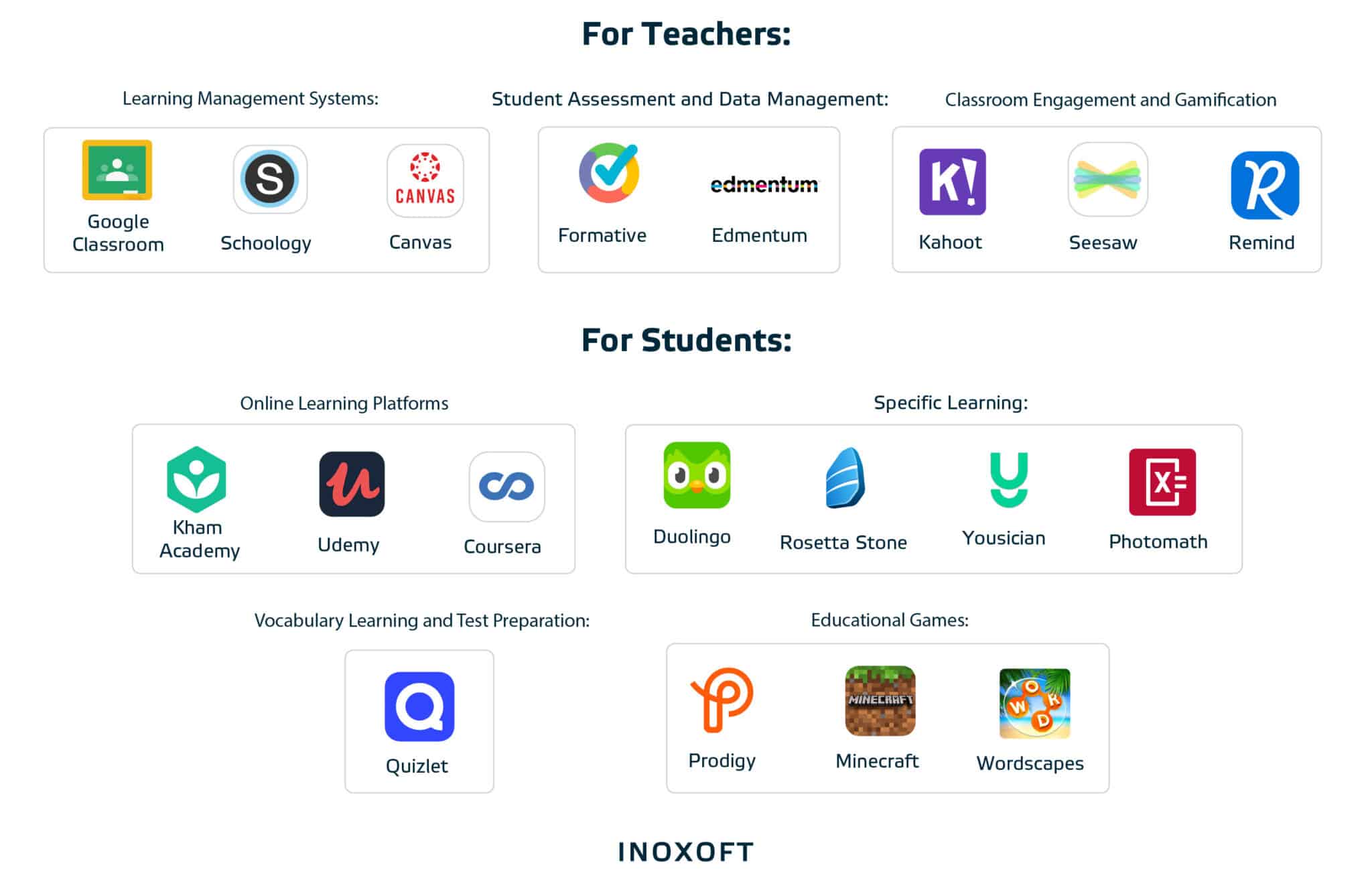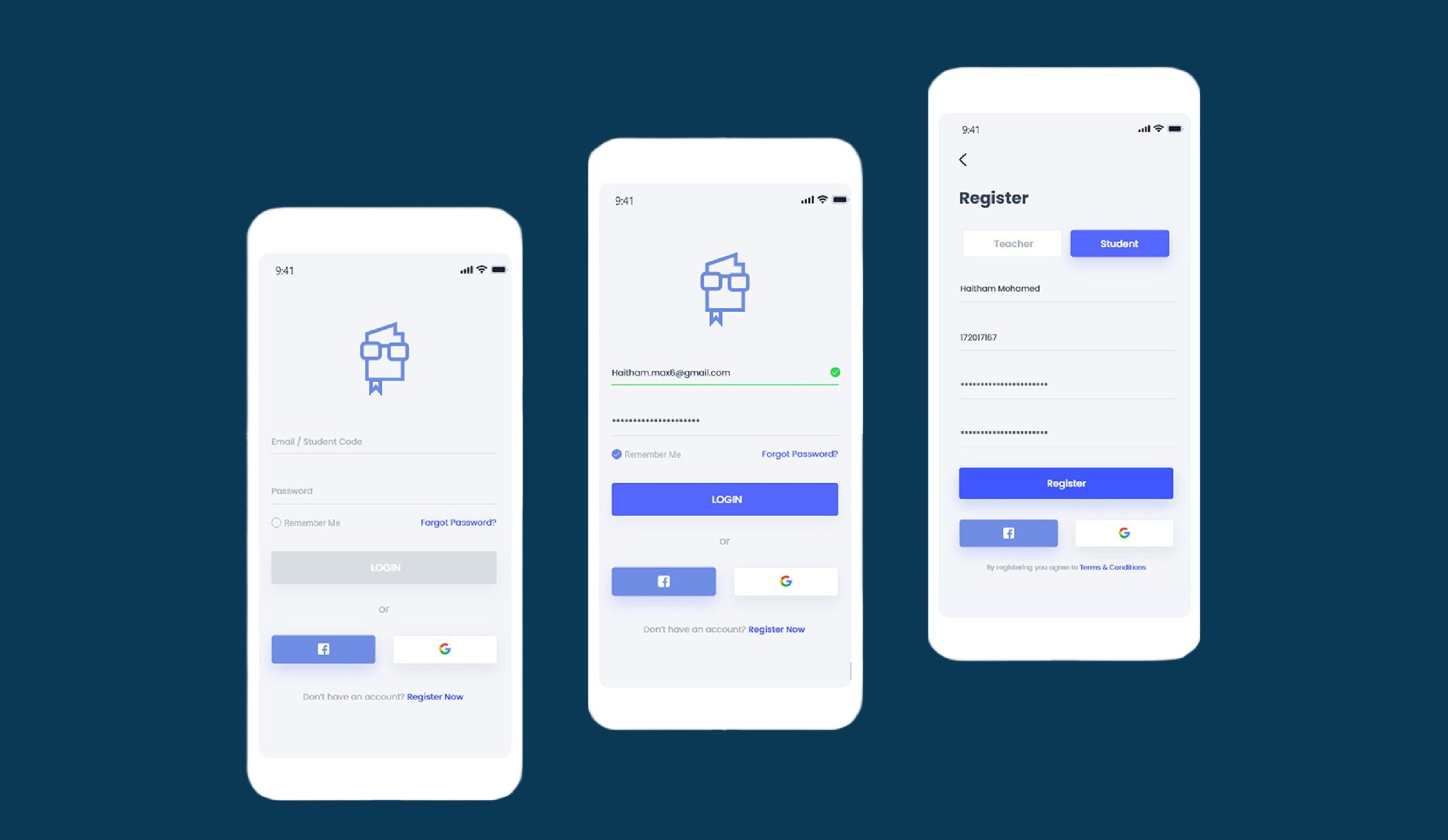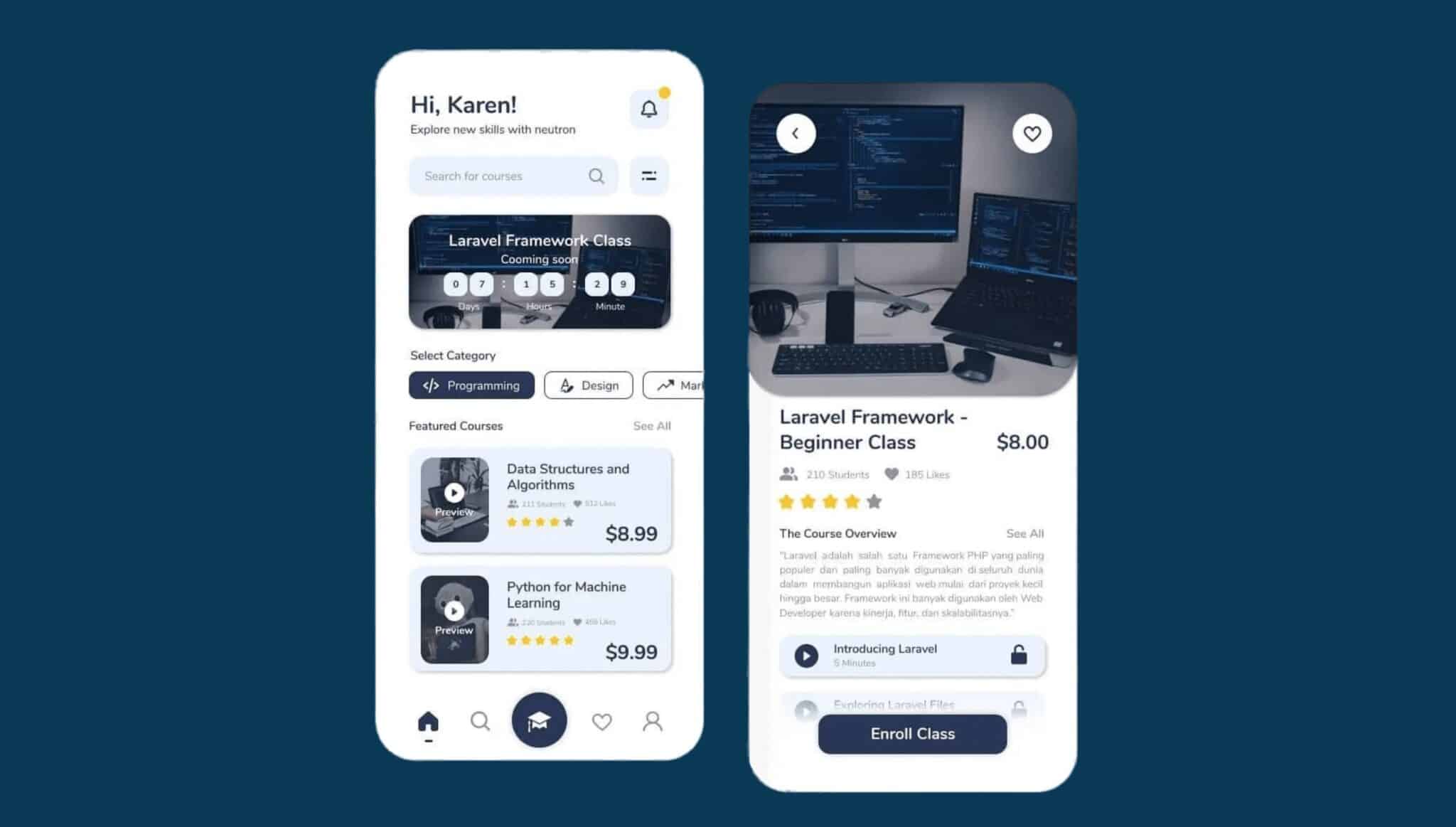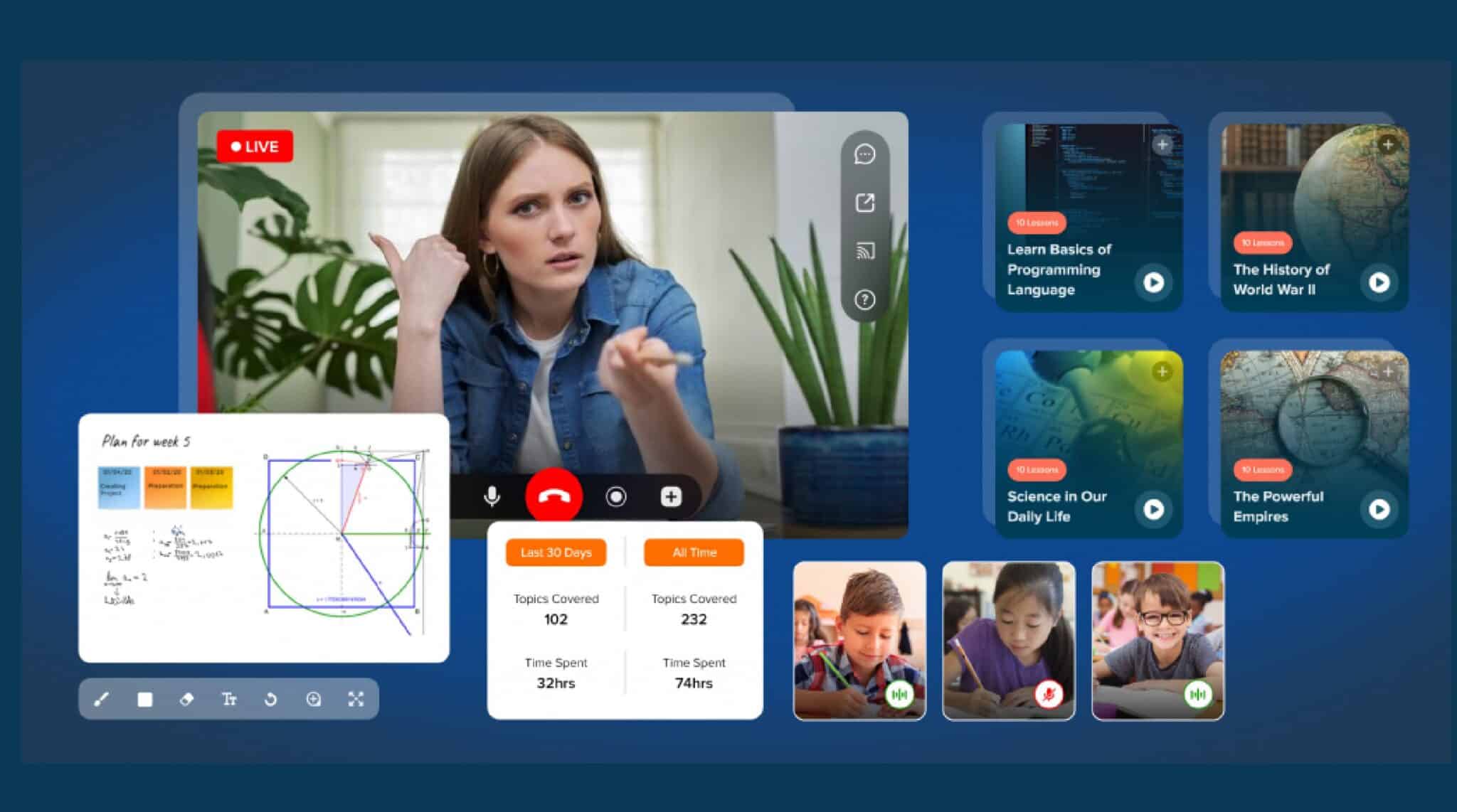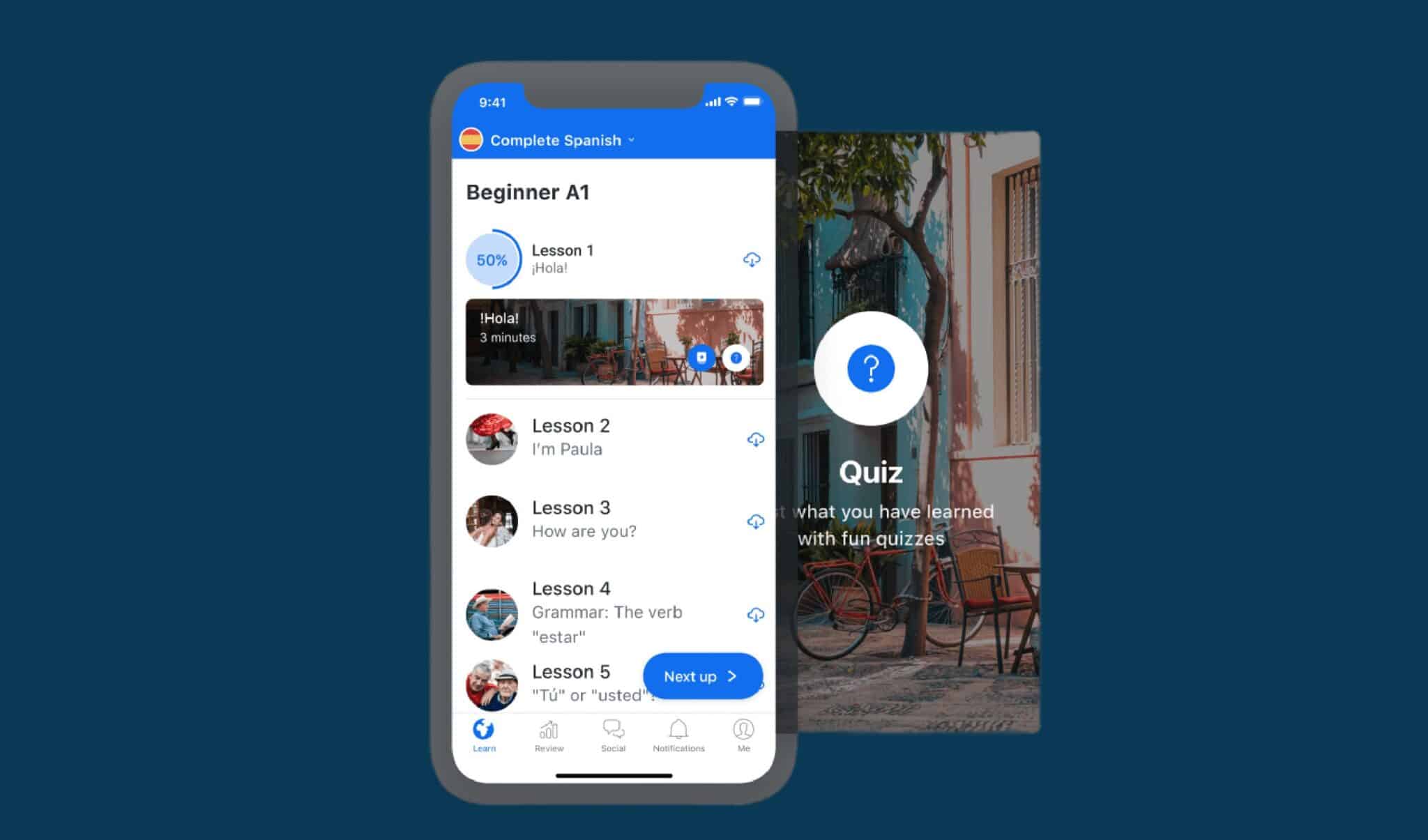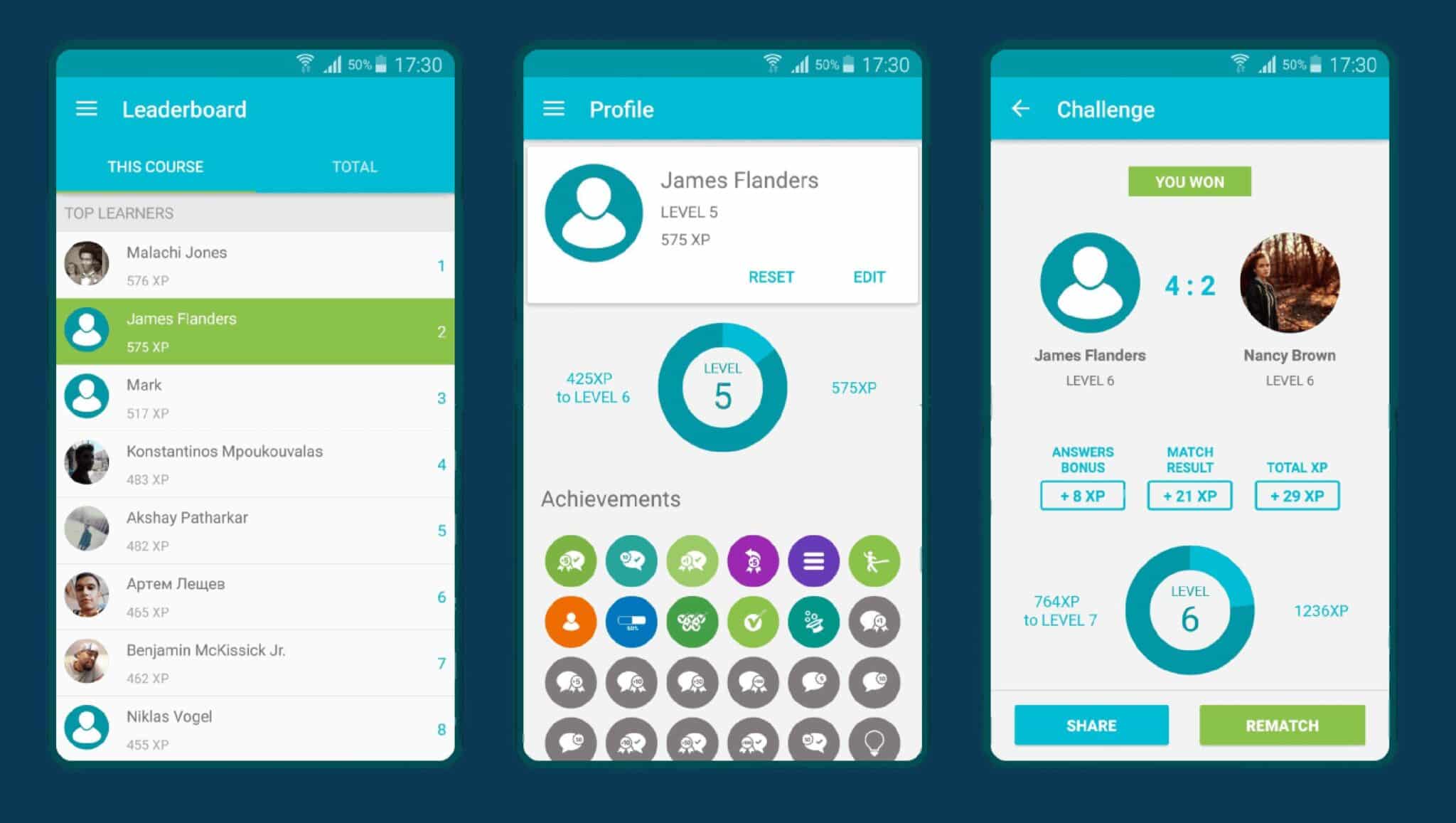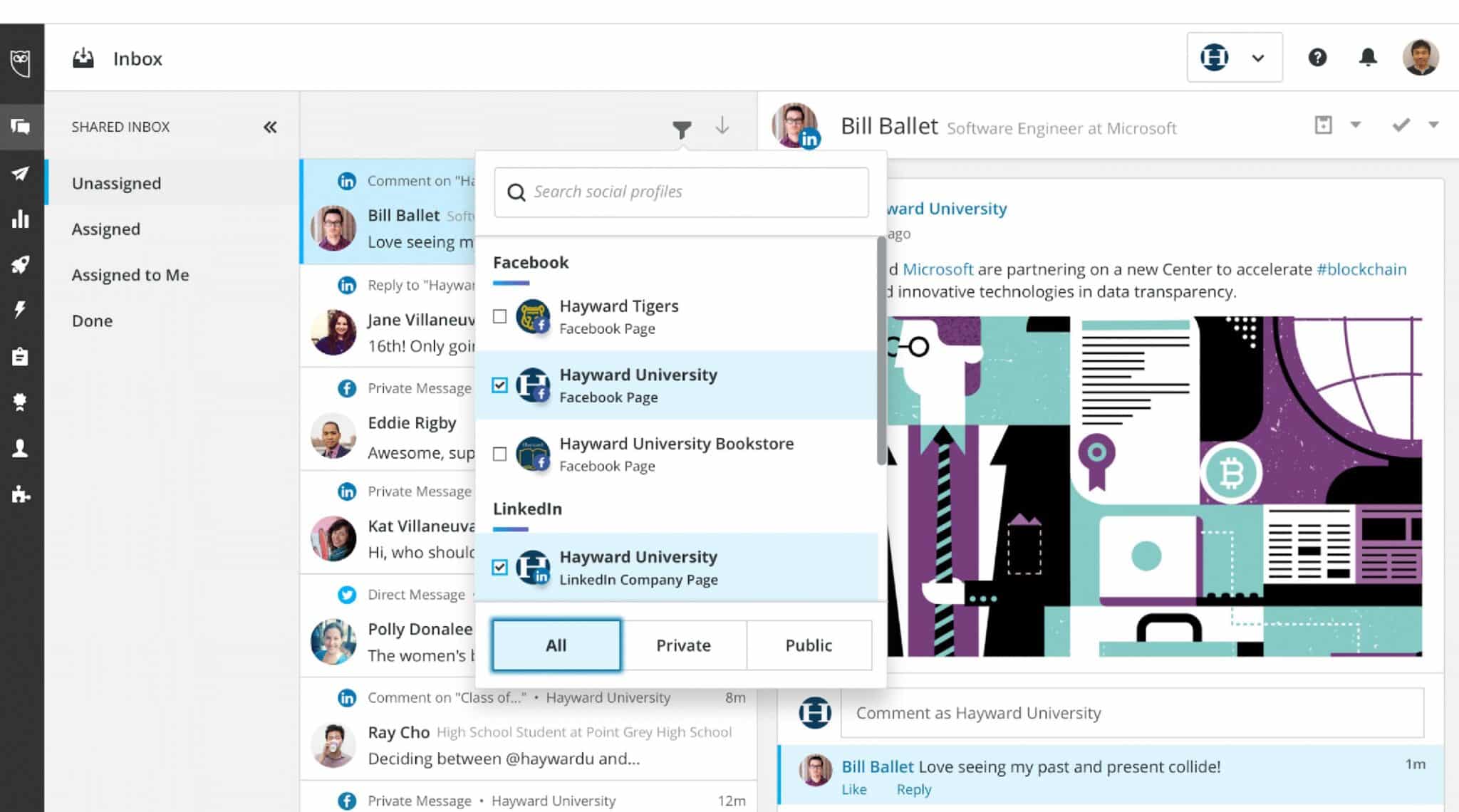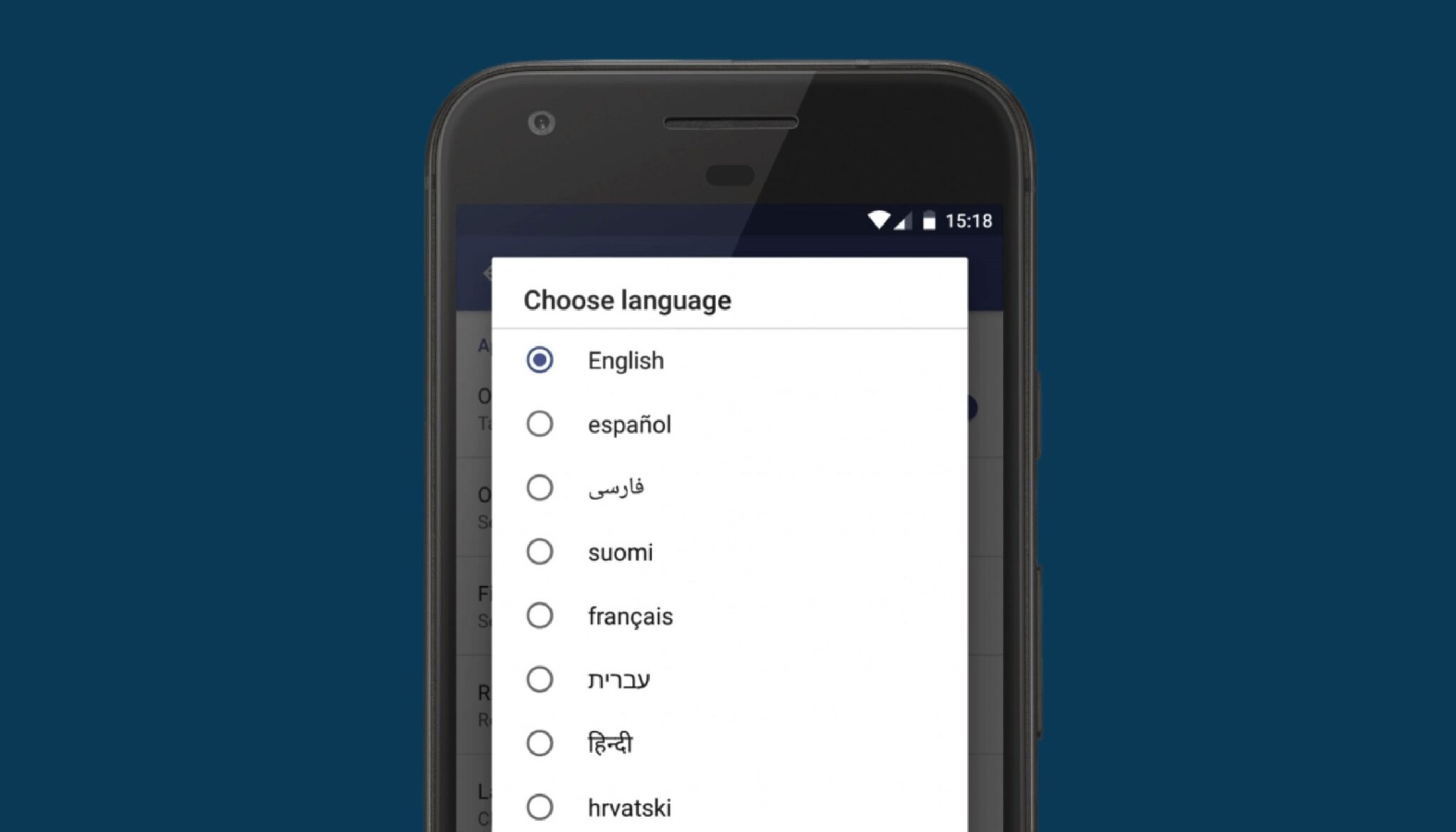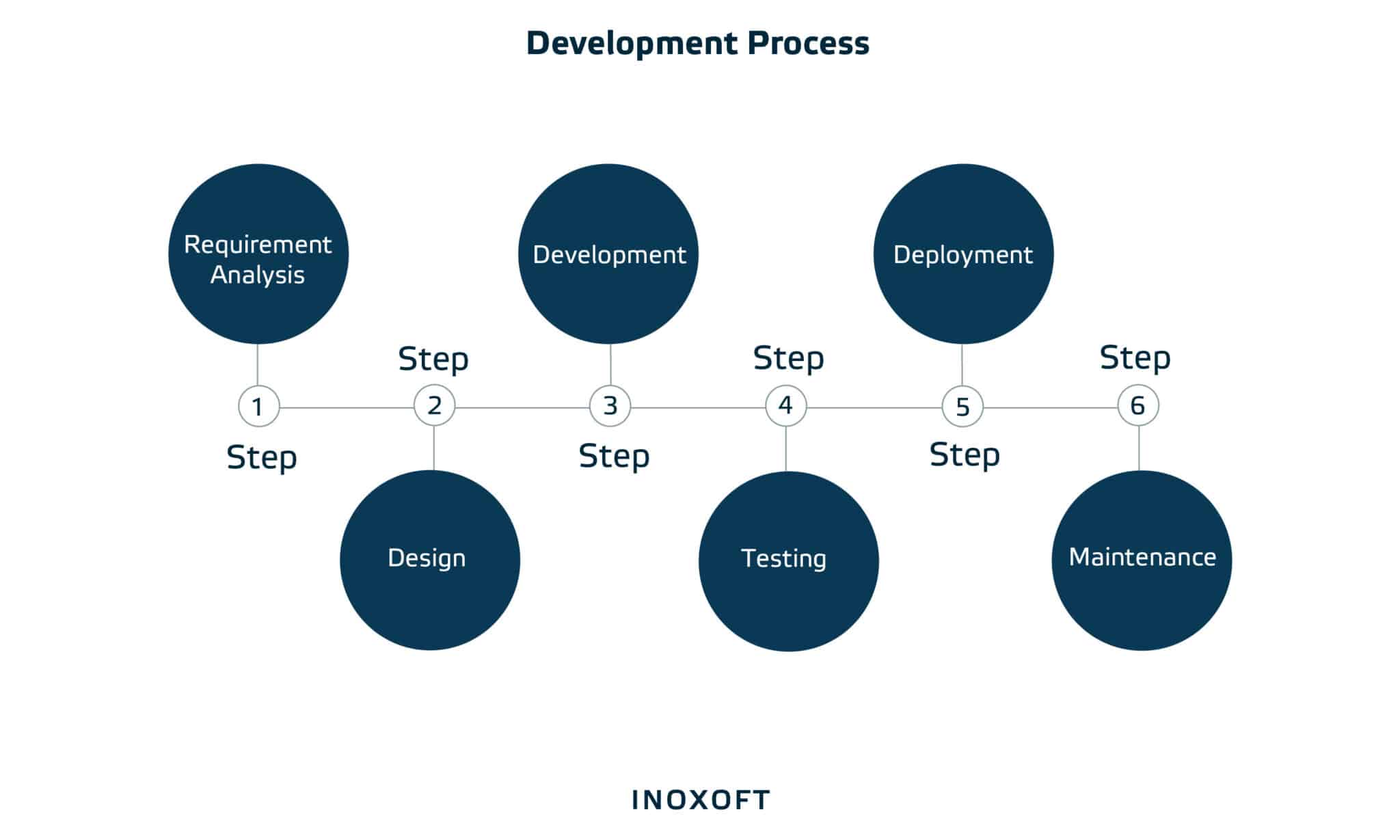Education application development is a promising idea, and a growing source of income as more and more people prefer to study anytime using only a smartphone. Inoxoft has extensive experience creating E-learning software, Learning Management System, and School Management solutions. We use advanced technologies, providing 360 and VR, intelligent AI chatbots, data analytics, and personalized learning experiences.
If you want to know how to create an educational app, what features to include, and how much it costs, this article is for you. You will also overview real cases, including language learning management system, content management app, language learning game, and library image processing solution.
- Education App Development Market
- Reasons to create an educational app
- Types of educational apps
- How to Develop Educational Apps: Required Features
- Features for teachers
- Features for students
- General Features
- Advanced features
- How to Develop an Educational App?
- Start with idea
- Determine target audience
- Monetization model
- The team
- Design
- Security
- Maintenance
- How Much Does it Cost to Make an Educational App?
- Approximate time-cost estimate
- Consider Inoxoft Your Trusted Partner
- Learning management system development
- Content management app for educational institutions
- Language learning game & social media solution
- Image processing solution for virtual reality
- Final Thoughts
Education App Development Market
Traditional education that has taken place in a classroom suddenly switched to the use of technology. It transformed the way students perceive education into an interactive approach that is not interrupted regardless of location. According to Statista, the global EdTech market is expected to grow to $370 billion by 2026. And education apps market is expected to reach up to $70.5 billion by 2025.
Here are some numbers provided by Digital 2023: Global overview report:
-
- 64.4% (5.16 billion) of the world’s population used the internet at the beginning of 2023
- There are 5.44 billion unique mobile phone users in the world
- 137 million new users came online over the past year
- 92.3% of internet users go online via mobile devices
- 38.3% of internet users (aged 16- 64) use the internet for educational and study-related purposes
- 13.6% of internet users pay for study programs and learning materials each month
Reasons to create an educational app
There are many reasons why creating an educational app is a great idea:
- Increased access to education. Educational apps provide access to materials for people in remote areas or those with disabilities.
- Personalized learning. Such solutions offer personalized learning experiences for each student based on their preferences, strengths, and weaknesses.
- Increased engagement. Make study more immersive and interactive through gamification, multimedia content, and interactive tools, motivating learners to go on.
- Time and cost savings. Educational apps save time and money for learners and educators by providing access to learning content and resources at a fraction of the cost of traditional methods.
- Scalability. Reach a large audience without physical infrastructure or additional teaching staff.
- Enhanced learning analytics. Get in-depth analytics on learner progress and performance, enabling educators to make data-driven decisions to improve outcomes.
- Monetization opportunities. Educational apps generate revenue through monetization models such as in-app purchases, subscription models, or advertising.
Types of educational apps
The educational mobile app development market is introducing more and more groundbreaking concepts. The most common types of mobile apps for education are the following.
Multipurpose learning platforms
These educational platforms offer more than just one course or sphere. Users with any background can choose a field, specific class, or a full-scale graduate program and enjoy the learning process. Platforms often provide students with personalized learning experiences and opportunities to learn at their own pace and access materials anytime and anywhere.
Examples: Khan Academy (math, science, humanities), Udemy (business, technology, creative arts), and Coursera (computer science, business, social sciences).
Specific subject apps
These apps are designed to provide in-depth information and resources for a particular subject area. They may offer interactive learning experiences, multimedia content, and self-assessment tools.
Examples: Duolingo (languages), Photomath (math), Rosetta Stone (languages), and Yousician (music).
Assessment platforms
They help students assess their understanding of the information and their scores. They use practice tests, quizzes, and personalized feedback to help learners improve their performance. This way, they can identify areas of strength and focus on areas of improvement.
Examples: Quizlet (flashcards, quizzes), Edmentum (learning plans for K-12 students), Formative (real-time feedback, automatic grading).
Educational games
Interactive learning is one of the educational trends. Thus, gamified training lets people boost their motivation and have fun while continuing to study. Games incorporate rewards, levels, and challenges to motivate learners to continue learning. They help retain knowledge and skills through repeated practice. This type also includes kid-focused educational applications.
Examples: Prodigy (fantasy math game), Minecraft (virtual world building while learning coding and math), and Wordscapes (language word game).
Learning management apps
They assist educational institutions in managing the formalities of the learning process: communication, schedules, attendance control, work submission, grading, etc.
Examples: Google Classroom (class management, communication), Schoology (management, collaboration tools), and Canvas (course management, grading, communication tools).
Classroom apps
These apps are designed for use in the classroom to enhance the learning experience. They keep teaching materials in one place, connect teachers and parents, and control behavior and knowledge. Their features include interactive whiteboards, multimedia content, and student collaboration tools.
There are two types of classroom apps:
- The one that serves as tutorial material and helps organize the learning process.
- The second one is a cloud-based application, used for remote learning.
Examples: Kahoot (quizzes, surveys, and discussions), Remind (communication), and Seesaw (digital portfolios).
We’ve prepared an infographic to summarize the learning app types:
How to Develop Educational Apps: Required Features
Education application development cost depends on different factors, including the number of added features. We grouped them according to the user role:
Features for teachers
Teacher profile
Teachers create personal profiles with data such as name, job title, courses offered, certificates, contact information, etc. It helps them increase visibility, enhance trust, and improve communication with colleagues and students. Also, teachers can get a personalized experience and find resources and courses relevant to their subject area and grade level.
Course management
With the help of dashboards, teachers manage courses more effectively. For example, they track progress, review students’ information and tests, comment on completed tasks, and give marks. Also, teachers can upload learning materials: videos, photos, PDF documents, and interactive exercises to test knowledge.
The course management feature helps teachers streamline their workflow, improve student communication, and provide a more organized and efficient learning experience.
Test
One of the essential features for teachers is the ability to test students, saving their time by automating the grading process and providing real-time feedback to students. You can create various options: a quiz with open or multiple-choice questions, true/false tasks, etc.
It provides teachers with data on student performance, allowing them to identify areas where learners may need additional support or instruction. Additionally, it is a convenient and accessible way to complete assessments, as they can be done on a mobile device or computer.
Learn more about developing an e-learning app
Features for students
Student profile
Users like it when they can customize their profile pages with information about who they are, what classes they take, what assignments are due, etc.
The student profile feature is all about personalized learning experiences. For example, the app recommends specific learning materials or activities based on the student’s individual learning style or previous performance. This helps learners stay engaged and motivated.
Advanced search
This feature lets students find the right course, subjects, teacher, etc. It can include searching by keyword, subject, or specific academic criteria — or multiple criteria at once.
Advanced search saves students time by allowing them to quickly find the information they need without having to scroll through multiple pages.
Student dashboard
This feature gives students access to essential information: personal progress, purchased courses, schedule of upcoming classes, or exams. It may include personalized recommendations for learning materials or activities based on individual progress and performance.
The student dashboard helps learners stay organized, motivated, and on track with their progress.
Payments
Most of the time, eLearning platforms are paid. Students pay for each course or get a subscription for a certain period. While developing an educational app, integrate a secure gateway and protect user data and sensitive information from unauthorized access. Offer a range of payment options to users, including credit and debit cards, PayPal, and others.
The pricing model should be transparent and easily understandable, as well as the refund policy. Besides, reliable customer support is essential in resolving issues or problems that users might face during the payment process.
General Features
Authorization
Teachers and learners start using the app by signing in to the system via email or phone numbers. You should create different user roles for students, teachers, administrators, or parents, each with their access levels. This helps ensure that users get only content that is relevant to them.
To enhance security, consider two-factor user authentication, password encryption, and account and session management.
Course page
Before enrolling, students must read a course description, plan, lectures, schedule, assignments, information about the lecturer, materials, etc. It’s an essential feature in educational apps providing students with an overview of the course and helping them to understand its objectives and expectations.
The course page should be easy to navigate, visually appealing, and with clear and concise information. Adding the ability to provide feedback, help instructors enhance the learning experience for future students.
Video streaming
This feature has to cover two options: recorded videos and real-time lectures. So it’d be better to think about the server in advance. Users need the ability to watch online courses in real-time and re-watch the lecture during the broadcast. And don’t forget to include a screen-sharing option.
Offline mode
Attract more users by providing offline access to the platform: downloaded content, course materials, test answers, etc. Once the device is back online, the app should synchronize the user’s progress and any offline changes with the server.
Push notifications
Students and lecturers get notifications about any updates that may occur during the learning process: new assignments and grades, shifts in timetables, deadlines, and so on.
There are some crucial things to consider for push notifications:
- Allow users to have control over them through opt-in and opt-out
- Personalize notifications to the individual user’s preferences and interests
- Consider their frequency, as too many notifications can be overwhelming, and too few may result in missing important information
- Send them when users are actively using their devices
- Include call-to-action, such as completing an assignment or participating in a discussion
Chat
Ensure that users can contact the support team or classmates for any assistance quickly and easily. Chat conversations may involve sensitive information. Hence, it is vital to implement end-to-end encryption, two-factor authentication, and other security measures to protect users’ data.
https://inoxoft.com/wp-content/uploads/2023/06/19.-scaled.jpg
Progress tracking
This feature enables students and teachers to track learning performance, show progress, and provide insights into improvement areas. It may include completion rates, quiz scores, time spent on lessons, and other relevant metrics.
Present data in an easily understandable format, such as graphs and charts. Some learning apps provide individualized learning. In this case, add the ability to set goals, track progress toward those goals, and adjust the learning plan as necessary.
Social media integration
Allows students to log in or sign up and share their progress and achievements on social media platforms like Facebook, Twitter, and Instagram.
Integrating social media into an educational app increases user engagement and retention, enables users to collaborate and communicate with each other, and reaches a wider audience.
Multilingual support
Educational apps engage with a larger audience by offering content in multiple languages. Let users easily select the desired one through a dropdown menu or specific button.
To translate content into different languages, use machine or professionally translated content. Also, take into account local cultural norms and idioms.
Gamification
Gamification is a feature in educational apps that utilizes game design techniques to enhance the learning experience. It uses game elements such as points, rewards, badges, leaderboards, and storytelling to motivate and engage learners.
When developing gamification, consider learning goals and difficulty levels. Maintain a balance between these elements and the educational content. Thus, you ensure the app is engaging, but the game does not distract from the learning process.
Advanced features
Augmented reality
Augmented Reality (AR) in educational apps refers to integrating virtual content and images with real-world environments to enhance the learning experience. This feature provides a highly immersive and interactive learning environment where students can visualize complex concepts more realistically.
For example, Human Anatomy Atlas by Visible Body can show a 3D model of a human body overlaid with a real-world image captured by a mobile device’s camera, allowing students to explore the body’s systems engagingly.
Virtual reality
Virtual Reality (VR) is similar to AR but provides a fully immersive environment where students interact with virtual objects and spaces. This feature is particularly useful in geography and history, where students explore virtual replicas of real-world locations and historical sites.
For example, a Rome Reborn VR app takes students on a virtual tour of ancient Rome and the Vatican, allowing them to see and experience these locations firsthand.
Chatbot
Chatbots simulate human conversations using natural language processing (NLP) techniques. Integrate them into educational apps to provide students with personalized learning experiences and support.
For example, the Babbel chatbot helps students practice their language skills by engaging them in conversation and giving feedback on their pronunciation and grammar.
Artificial intelligence
Artificial Intelligence (AI) in educational apps involves using algorithms and machine learning techniques to personalize and optimize the learning experience. For example, AI analyzes student performance data and provides customized recommendations based on individual learning styles and preferences.
For example, an AI-powered Carnegie Learning platform identifies areas where students struggle and provides targeted learning materials and resources to help them overcome these challenges.
Read more: Examples of big data in education
How to Develop an Educational App?
To build an educational app, there are six main stages necessary to conduct. Usually, it all starts with requirements gathering, then planning, designing, developing a product, testing it, and providing support.
Here are a few tips from Inoxoft’s educational app developers on how to make the development process as convenient as possible.
Start with idea
One of the most essential things behind a successful app is a solid idea. But despite how awesome your concept may appear, you need to evaluate it, by conducting market research. Here is a list of tips:
- Explore existing products and your competitors
- Surf online resources for information
- Get insight with the help of forums (e.g. Quora) and Google Keyword Planner
- Conduct questionnaires among potential users
- Speak to stakeholders (any educational institutions) about their pain points.
Determine target audience
How to make an educational app without understanding who your end-user is and his pain points. Do you know :
- Who will be interested in using an app?
- What will the learners use an app for?
- Why will they use your app?
- How will learners use your app?
- What benefits an app will bring to make them download it?
- What problems can it solve?
Monetization model
Choosing the right monetization approach is the key to overall success. There are several most popular types of models:
- In-App Purchases
- Subscriptions
- Freemium
- In-app advertising (native, interstitial, video, and banner ads)
- Paid Apps
Each has its pros and cons, so read our article that will help you make a decision.
The team
To develop educational apps you need a team. Here is a list of experts you need for your project:
- Business Analyst
- Project manager
- Android/iOS developers
- Flutter developers (if needed)
- Back-end/ Front- end developers
- UI/UX designer
- QA engineers
*The presence of each team member is discussed per case.
Design
Doesn’t matter if your end-user is a student, teacher, the whole school, or employee who needs to pass training, each of them chooses mobile apps with a simple and clear UX/UI.
Here are a few things to follow:
- Read Google and Apple guidelines to be accepted in their stores
- Make design intuitive by following the 2-tap rule (if it takes more than two taps to do what the user wants, make some changes)
- Your design must be responsive to all operating systems
- Logical design elements follow the 5-point rule (count each different font, color, the size on a screen. If the number of elements is more than 5, redesign it.)
Security
If your app stores personal data (e.g. banking information, payment, contacts, etc.), security is a crucial matter. Common security practices include:
- Cryptographic key management
- Encryption of the local database, API communication, or cache
- Integration of safe communication standards
Maintenance
Users will abandon the app if they experience repeating errors. Regular updates, fixed bugs constant improvements, new features, performance, and security are things that keep your app on the market.
How Much Does it Cost to Make an Educational App?
The cost of creating educational apps depends on various factors such as project complexity, features, development approach, tech stack, cooperation model, etc. However, factors affecting cost the most are development time and the hourly rate of your e-learning software development company.
Approximate time-cost estimate
| Features / Hours | Android | iOS | Back | Front | Other | Total |
|---|---|---|---|---|---|---|
| Registration | 20 | 20 | 15 | 15 | 10 | 80 |
| Customizable profile | 30 | 30 | 15 | 20 | 10 | 105 |
| Courses page | 20 | 20 | 10 | 20 | 10 | 80 |
| Feed | 40 | 40 | 30 | 25 | 20 | 155 |
| Video Streaming | 40 | 40 | 50 | 60 | 20 | 210 |
| Search | 30 | 30 | 50 | 60 | 15 | 185 |
| Push notification | 16 | 16 | 15 | 30 | 34 | 111 |
| Offline mode | 20 | 20 | 20 | 40 | 15 | 115 |
| Total | 216 | 216 | 205 | 270 | 134 | 1041 |
Also, you can use our app calculator to estimate app development cost!
Read more: how to develop an educational app
Consider Inoxoft Your Trusted Partner
Inoxoft is an education software development company that knows the new technologies used in the industry and offers application development services to satisfy your business needs. Change traditional learning methods into an enjoyable experience with our:
Our solutions offer a range of features, including the possibility for open-source collaborations and research, content creation, data analytics, skill assessment, gamification, and simulation. Additionally, they easily integrate with schools’ ERP, calendars, design apps, and IoT devices.
- School management software development services for handling educational institutions
- Custom LMS development for educational and business needs
- Scalable eLearning software development for a variety of domains
Let’s look at examples of educational solutions in our cases.
Learning management system development
An English teacher with a successful blog needs a user-friendly solution that offers a unique learning path for each student and increases sales productivity. We have developed an interactive multi-functional platform that allows real-time communication with teachers and self-paced courses.
The learning solution has a language level test, tasks of varying difficulty, chat, online conferencing tools, and more. Personalized user interface design, interactive content, and gamification elements help improve user engagement.
Content management app for educational institutions
An exciting challenge for our team was developing a solution that allows the use of digitized library print collections while protecting the rights of authors and publishers. This allowed the company to become a leading supplier of hybrid library products.
A feature of the project is that the use of materials is limited in time and is provided by an encrypted PDF reader for iOS, Android, and Windows. The app makes the library’s print collections accessible and inclusive, providing easy reading even for the visually impaired through audio.
Language learning game & social media solution
The founder of the innovative language-learning board game New Amigos approached us to digitize the game and present it as a web application. Preserving some of the rarest Norwegian dialects was important, so the program had to allow them to be heard, taught, and spoken.
We have developed a complex algorithm depending on the game’s frequency, users’ success, and time frames. Also, the application supports dual and single game modes, live and not streaming videos, multilingual support, and the ability to send invitations.
Image processing solution for virtual reality
Our client needed to create an online solution that brings the experience closer to using a regular library. It was also necessary to install a backup system of scanning devices.
We mirrored real library stacks in virtual reality, created accounting tools with a bibliography, and linked bibliographic and graphical data. The exact location of the books is now available online, and students can access the books in PDF format.
Final Thoughts
Learning apps offer numerous benefits — from increased accessibility and convenience to personalized learning experiences. However, creating such solutions requires increased attention to selecting and developing features and building an intuitive, user-friendly interface.
Inoxoft has all the needed learning software development experience and expertise, proven by our portfolio and client testimonials. Contact us if you’re ready to create a unique educational solution for the world.
Frequently Asked Questions
What are the benefits of creating a learning app?
Creating a learning app can provide various benefits, such as enabling access to education anywhere and anytime, enhancing engagement and motivation, and personalizing learning experiences. Also, it is a cost-effective solution for education.
What are the types of educational apps?
The most common types of educational mobile apps include multipurpose learning platforms, specific subject apps, assessment platforms, educational games, learning management apps, and classroom apps.
What features are required for ed applications?
For educational software, consider general features, such as authorization, course page, video streaming, offline mode, push notifications, chat, progress tracking, social media integration, multilingual support, and gamification. Also, there are some crucial functions for teachers (teacher profile, course management, test) and students (student profile, advanced search, dashboard, payments).







